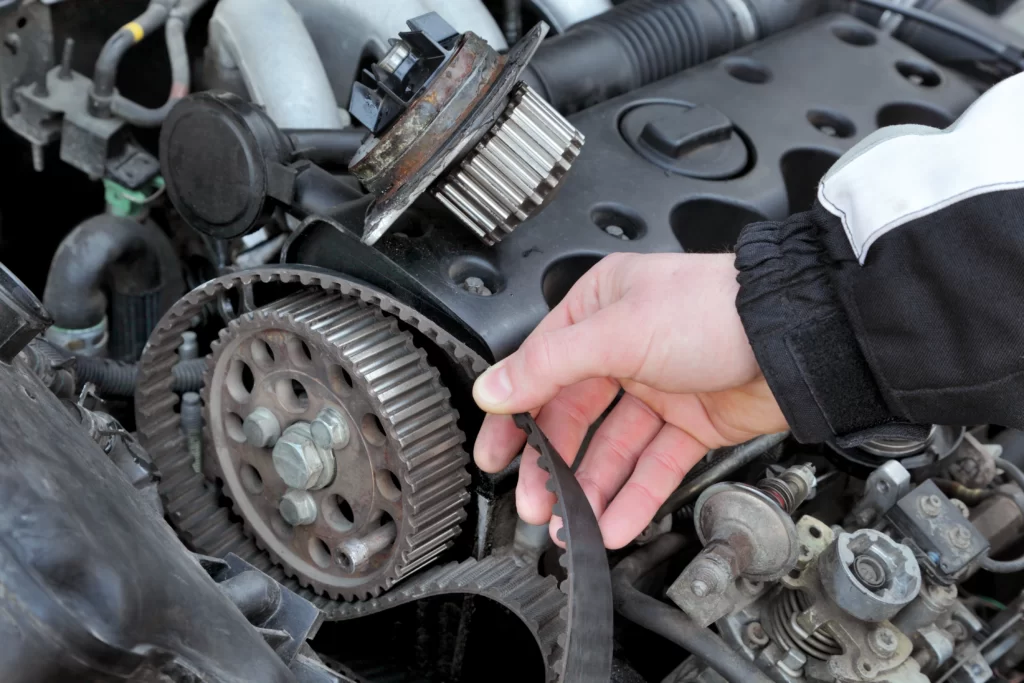
Your car’s engine is a finely tuned machine, and at the heart of its operation lies the timing belt. This unassuming but vital component ensures that all the engine’s moving parts work together in perfect harmony to let you continue driving in Lebanon, IL. However, like any part in your vehicle, belts wear out over time. To avoid catastrophic engine failure, it’s essential to recognize the warning signs that indicate it’s time to have your car’s timing belt replaced. In this blog, we’ll explore these signs and why timely replacement is crucial.
High Mileage
A general rule of thumb for timing belt replacement is every 60,000 to 100,000 miles. The exact interval varies by vehicle make and model, so consult your owner’s manual for the manufacturer’s recommendation. If your car has surpassed this mileage range, it’s a clear signal that it’s time to consider a replacement.
Visible Wear and Tear
Visually inspect the timing belt if possible. Check the belt for signs of missing, cracked, or otherwise damaged teeth. If you notice any of these issues, it’s a definite indicator that your belt needs replacement.
Engine Misfires
When a timing belt begins to wear out, it can throw off the engine’s timing, leading to misfires. You may notice your engine running unevenly or hear a rough idling sound. These are early signs that your belt might be nearing the end of its life.
Ticking or Clicking Noises
Unusual ticking or clicking noises coming from the engine bay can be a sign of a loose or worn belt. This noise is caused by the belt slipping or not running smoothly over the pulleys.
Reduced Engine Performance
A failing timing belt can result in decreased engine performance. You might experience a loss of power, reduced acceleration, or poor fuel efficiency. If you notice a decline in your car’s overall performance, it’s time to investigate the belt.
Engine Overheating
The timing belt is closely connected to the water pump in many vehicles. If the belt fails, it can cause the water pump to stop working, leading to engine overheating. An overheating engine can cause severe damage, so it’s essential to address this issue promptly.
Oil Leaks
In some cases, a deteriorating timing belt cover gasket can lead to oil leaks around the belt area. If you notice oil seeping from this area, it’s a sign that the belt cover gasket may need replacement, and it’s an opportune time to inspect the belt itself.
Difficulty Starting the Engine
A worn or damaged timing belt can lead to difficulty starting your car. If you find that your engine cranks but doesn’t start or takes longer to start, it could be due to a timing belt problem.
Sudden Engine Stalling
In the worst-case scenario, a worn timing belt can break while the engine is running. This can cause the engine to stall suddenly, potentially leading to extensive engine damage.

Maintenance History
If you’re unsure of your timing belt’s replacement history, it’s better to err on the side of caution. Most manufacturers provide specific replacement intervals, and neglecting this critical maintenance can lead to costly engine repairs. As soon as you notice the signs your timing belt needs repaired, take it to a trusted local mechanic near the Lebanon, IL area.
If you live in Lebanon, IL and are looking for a company in the nearby area that fixes timing belts in cars, contact Full Circle Auto Service Today!





